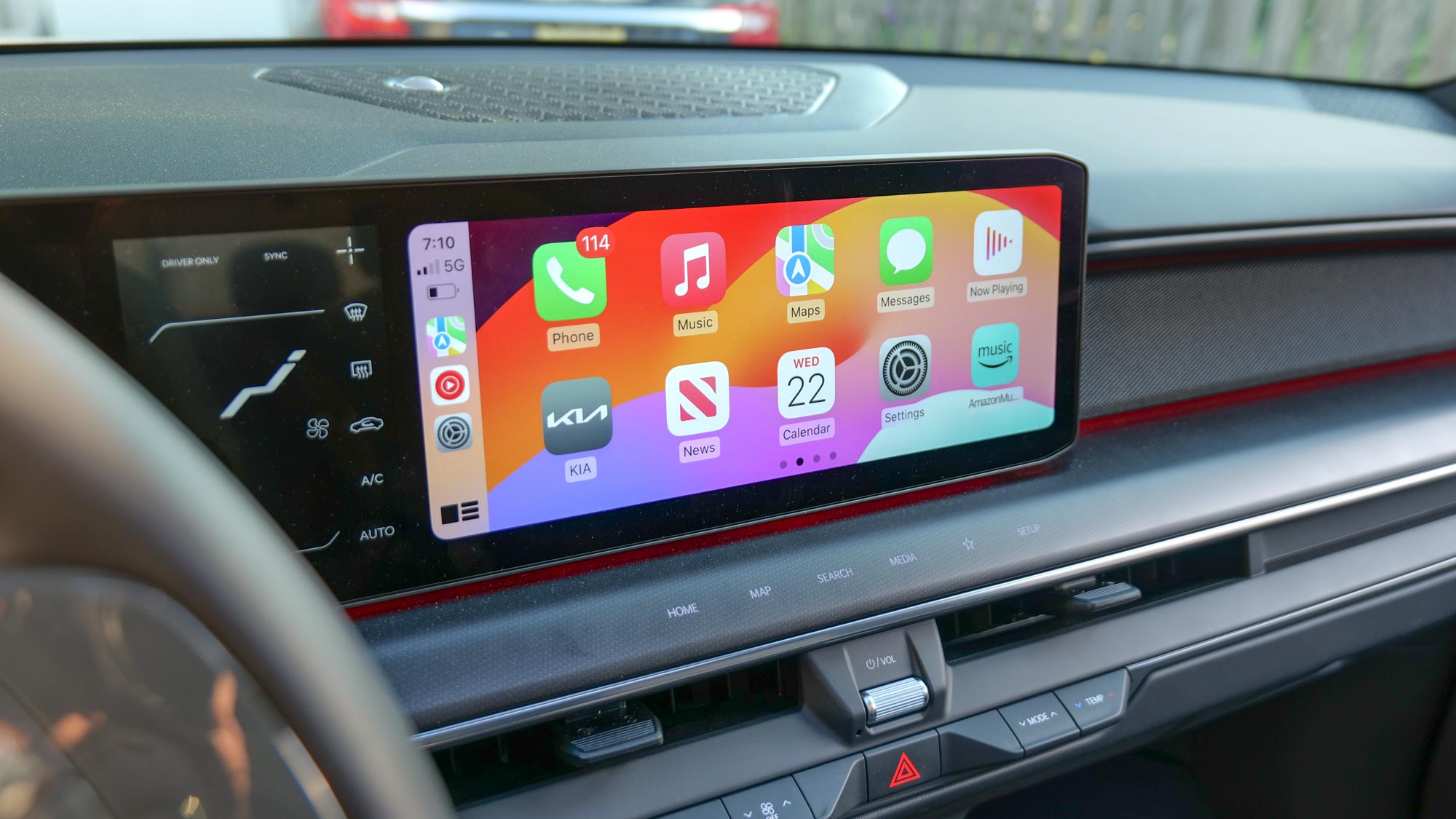In the past year, I’ve been testing an assortment of electric cars ranging from the most affordable EVs to the most efficient ones. One of the biggest conveniences I’ve come to enjoy early on was whenever a vehicle offered support for CarPlay or Android Auto. In fact, I often criticized those that didn’t offer them.
I’ve had a change of heart since then, especially the more I began to explore the various aspects that new car buyers look for if they intend on buying an electric vehicle — things like how long it takes to charge at home or the potential sticker shock of paying at a charging station. I really still enjoy how Android Auto and CarPlay extend my phone’s software into whichever EV I’m driving. It’s intuitive and familiar, but I’ve come to realize that not having that kind of support isn’t a dealbreaker anymore.

It took me a long time to come to this realization. But if I were you, I wouldn’t get too worked up if the next car you’re eying doesn’t support them. Here’s why.
You can always default to Bluetooth pairing(Image credit: Future)Not all cars offer support for CarPlay or Android Auto, but I can tell you that I’ve yet to come across any EVs that don’t come standard with Bluetooth. Affordable models like the Hyundai Kona Electric and Chevrolet Equinox EV I’ve tested have Bluetooth, which lets me pair my phone to stream music and take phone calls.Since I review many of the best phones, too, I often lean on the voice assistants in my phones for that hands-free experience.
Essentially, I can say voice commands to Google Assistant or Siri to call someone or start playing music. You really don’t need Android Auto or CarPlay support for these basic experiences.Some cars have Google integration(Image credit: Tom's Guide / John Velasco)If you’re like me and rely a lot on Google Maps for navigation, just know that some cars have native Google integration with their infotainment system.
Take the Chevrolet Equinox 2LT EV and Chevrolet Silverado EV I've tested, neither of which offers Android Auto or CarPlay support. Instead, you get Google integration with the Android Automotive OS.There’s a dedicated Play Store to download apps with my Google account, along with Google Maps for my navigation.
This is better than using the native navigation systems I see in other cars because they tend to feel antiquated — like how they don’t show traffic conditions or stalled vehicles. For phone calls, I can still access them through Bluetooth.There’s always the phone mount method(Image credit: Tom's Guide)Since 2010, I’ve been relying on phone holders and mounts to integrate my phone to my car — which many drivers still continue to do today.
Just look at all the Uber and Lyft drivers out there, who use this combination to get around.What I’m getting here is that this is the universal method of integrating your phone into your car, so not having native CarPlay or Android Auto support shouldn’t be a dealbreaker.In fact, some of the best car phone mounts also have the ability to charge your phone wirelessly while it’s held in the cradle.
Additionally, the best car head-up displays can effectively accomplish the same task of integrating your phone to your car.I don’t spend enough time in my car(Image credit: Future)I don’t spend hours at a time in my car to reap the rewards of having CarPlay or Android Auto integration. If I did, then maybe I might think otherwise.
But on average, my commute to the train station from my home takes me no more than 10 minutes. That’s enough for maybe three good songs, but it’s not like I need to play a specific playlist I made to enjoy that quick ride.Longer trips can benefit from having access to CarPlay or Android Auto, but I can’t think of anything else practical to access on my phone besides listening to music, getting turn-by-turn navigation, and occasionally accepting phone calls.
One example I want to share is the Dunkin Donuts app for CarPlay, which lets me reorder my favorite drink orders, but it doesn’t let me start new orders from scratch. For that, I physically need to run the app on my phone.Bottom line(Image credit: Tom's Guide)Whenever I come across an EV I’m testing that has CarPlay or Android Auto support, I think it's more of a nice-to-have feature — with wireless connectivity being the cream of the crop with this (instead of doing it with a wired connection).
For car shoppers, I think it’s much more important to look at what other convenience features are worth getting.For example, I would recommend looking for a vehicle that has an assisted cruise control system that will help guide/steer the wheel for you. Or perhaps having blind spot camera monitors to help you out while changing lanes? I just don’t think that CarPlay or Android Auto support should be high on your priority list.
More from Tom's GuideI test drove a Lucid Air Pure for an entire day — it has better range as my gas-powered carSorry, EVs — I test drove my first PHEV and it’s the perfect blend of electric and gas powerI tried this thermal camera to make my nighttime driving safer — and it's a game changer.
Technology

I test EVs for a living — here’s why not having CarPlay or Android Auto isn't a big deal

I used to think it was terrible for any car to not offer support for Android Auto or CarPlay. But after testing more than 30 electric cars the last year, it shouldn't be a dealbreaker.















